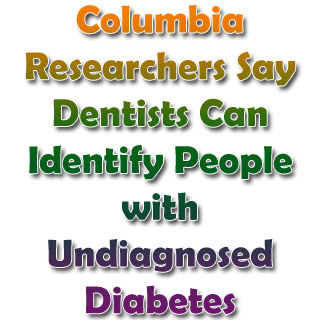
Nearly 600 dental visitors of a clinic at Northern Manhattan in the age group 30 or older participated in the study. None of them had any idea if they had diabetes or pre-diabetes.
Dr. Ira Lamster, dean of the College of Dental Medicine, and senior author on the paper, specified “Periodontal disease is an early complication of diabetes, and about 70 percent of U.S. adults see a dentist at least once a year. Prior research focused on identification strategies relevant to medical settings. Oral healthcare settings have not been evaluated before, nor have the contributions of oral findings ever been tested prospectively,”
Almost 530 patients with a minimum of one extra risk factor for diabetes underwent a regular examination and also received a fingerstick point-of-care hemoglobin A1c test. To draw a comparison and evaluate the working of the aforesaid protocol, patients reverted for a fasting plasma glucose trial that determined if participants had diabetes or pre-diabetes.
According to scientists, amidst dental patients with a risk factor, a simple calculation technique comprising of 2 dental variables helped them reach their objective. The 2 parameters were namely the number of missing teeth and percentage of deep periodontal pockets that seemed to help spotting diabetes or pre-diabetes in a person. The additional point-of-care A1c test was essential as it enhanced the functionality of the algorithm.
According to an associate professor, medical efforts have been aimed at identifying diabetes since many years. Simple alterations in lifestyle of patients with pre-diabetes seem to prohibit progression to complete diabetes and therefore necessitate the recognition of the same. This study is a convenient process that can apparently be used in all dental settings.
This study is called Identification of unrecognized diabetes and pre-diabetes in a dental setting, and is to be published in the Journal of Dental Research.
